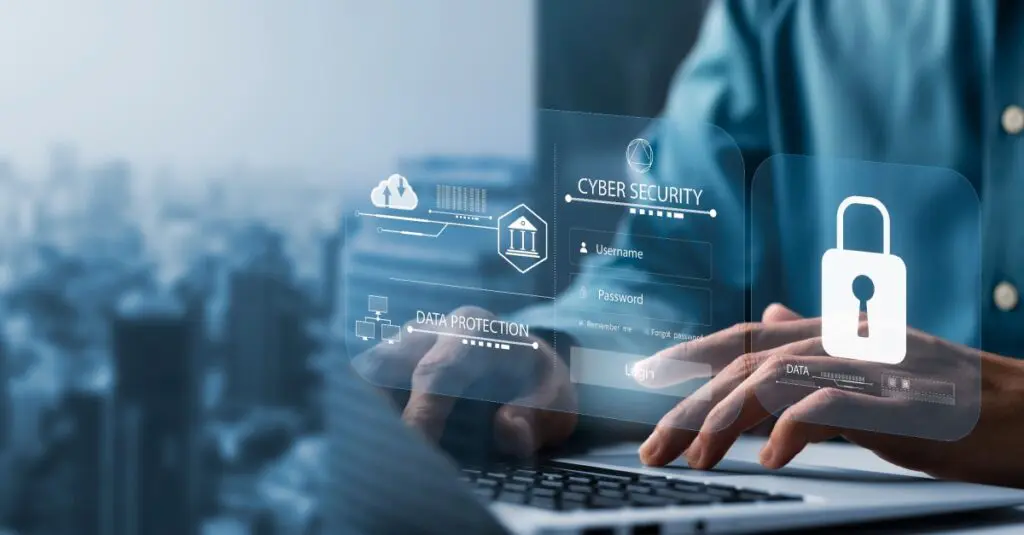
Big Ideas: What’s on the Horizon for Supply Chain 2025?
Change is certainly going to come, and a number of developments are expected to impact the supply chain in 2025. That includes the increased adoption of artificial intelligence (AI) and robotics, investment growth in renewable energy, and momentum gains for nearshoring.
No matter what happens in 2025, Supply Chain Now will be there every day to serve as the voice of the industry and keep supply chain podcast listeners informed about the big ideas as well as the little changes that could make a big impact.
Ongoing Disruptions Are Set to Impact Industry
The question isn’t whether there will be supply chain disruptions in 2025. It’s a matter of when, where, and the cause of the disruption. The International Longshoremen’s Association could go on strike again in January if a contract agreement is not reached. The Houthi could stage more attacks on containerships in the Red Sea at any time. And weather-related disasters could range from deadly ice storms to floods to hurricanes anywhere in the country.
“Looking ahead to 2025, we can predict some major shifts and challenges for supply chains. Right now, businesses around the world are facing increasing pressure to adapt to new technologies, environmental impacts, and changing global trade policies. While these developments offer many exciting opportunities, they also bring unique hurdles that companies will need to overcome if they want to stay competitive and resilient,” a late-October FreightCenter blog said.
AI Is Poised to Revolutionize Operations
Massive investments in AI, machine learning, automation, and robotics were made in 2024. Walmart, for example, announced in early October that it was automating two regional distribution centers, in Buckeye, Arizona, and Searcy, Arkansas, to double the number of cases processed per hour. Amazon’s new fulfillment center in Shreveport, Louisiana, reportedly uses 10 times more robots than its previous warehouse designs and utilizes AI to direct the eight different models of robots working in the facility.
“For the first time, we have introduced technology solutions in all key production areas at the site, meaning our employees will work alongside our growing fleet of robotic systems seamlessly in a way that wasn’t possible until now,” Amazon said.
The advanced technology movement is expected to continue to 2025, with more implementation of AI, large language models (LLM), robotics, and automation taking place throughout the supply chain.
“Technology plays a pivotal role in overcoming the supply chain challenges of 2025. Predictive analytics, IoT, and machine learning can help you anticipate disruptions and improve decision-making,” a Propel Apps report said, adding that “AI and robotics will continue to revolutionize warehousing and logistics operations, cutting down on errors and speeding up processes.”
Tumbler manufacturer Stanley 1913 announced in late October that it was implementing Kinaxis’ AI platform to predict and prevent supply chain disruptions.
“We have explored the use of advanced predictive analytics through machine learning and artificial intelligence, allowing us to gain end-to-end supply chain visibility and enabling powerful scenario planning to facilitate sustainable growth,” Karthik Sivakumar, Stanley 1913’s vice president of supply chain and operations, said in the announcement.
Regulatory Uncertainty Leaves Businesses Asking Questions
The United States will inaugurate a new president on Jan. 20, 2025, and bring a push for the enactment of new trade policies, emissions rules, and labor regulations. That push will likely bring congressional pushback.
For instance, the Congressional Research Service explained that “Congress has primary authority over U.S. trade policy through its constitutional power to levy tariffs and regulate foreign commerce. It has delegated some trade authorities to the Executive, but retains an active role in formulating trade policy and shaping outcomes.”
In reporting on trends to watch in 2025, Global Logistical Connections Inc. said that “nearshoring – bringing production closer to key markets – will gain momentum as companies seek to improve response times, mitigate geopolitical risks, and enhance control over their supply chains. By 2025, nearshoring will complement global supply chains, enabling companies to maintain a balance between cost, speed, and resilience. This shift will allow for faster adjustments to changing customer demands and reduce vulnerabilities.”
On the decarbonization front, Levi Strauss & Co. committed in mid-October to net-zero emissions across its supply chain by 2050 and has a goal for 2025 of reducing absolute Scope 1 and 2 greenhouse gas emissions by 90% compared to a 2016 baseline.
Three Supply Chain Leaders on Supply Chain 2025
Supply Chain Now asked leaders from three innovative companies about what they foresee to be the biggest challenges in 2025. All expect a multitude of risks next year.
Evan Junker, SPARQ360
With offices in Germany, the Netherlands, and Charlotte, North Carolina, SPARQ360 provides companies around the world with supply chain optimization and sustainability solutions. Its leaders have a combined hundreds of years of on-the-ground supply chain and logistics experience as well as up-to-date regulatory knowledge and customized compliance strategies to help overcome complex challenges.
As chief growth officer, Evan Junker oversees SPARQ360’s customer success management program. He leads strategic partnership initiatives and supports both internal and external marketing efforts, including client annual reports, sustainability reporting, communications support, and market entry and expansion efforts.
“The greatest challenge for shippers will not be any one thing — it will be navigating the triple threat of sustainability mandates, economic volatility, and increasing customer demands for transparency,” Junker told Supply Chain Now. “Each pressure — stricter sustainability requirements, cost volatility from economic and geopolitical forces, and heightened expectations for real-time visibility — competes with the others, creating seemingly tough trade-offs.
“Achieving emissions targets calls for significant technology investments, yet economic instability can make these measures financially daunting. At the same time, customers expect seamless service and transparency, pushing shippers to build resilient, adaptive networks that balance these competing demands without compromising on cost or reliability.”
SPARQ360 drilled down into what supply chain leaders expect with its 2024 Supply Chain Trends and Attitudes Report. With the help of Appalachian State University, SPARQ360 gathered insights on supply chain optimization, sustainability, technology investments, collaboration, and more.
Christine Barnhart, Nulogy
Nulogy’s cloud-based multi-enterprise platform synchronizes hundreds of supply chain networks and packaging operations around the world while focusing on reducing waste, minimizing costs, and accelerating growth.
Christine Barnhart’s profile on the Nulogy website says that “her extensive experience as a supply chain expert and seasoned software executive makes her uniquely positioned to incorporate sales, product, and customer success in the way marketing approaches its go-to-market, demand generation, and brand-building efforts.”
Part of Barnhart’s job as Nulogy’s chief marketing and industry officer is “to shape and educate the market around the emerging space of multi-enterprise collaboration.” She previously held product and market strategy leadership positions at Verusen and Infor.
“There are so many issues facing shippers that it is difficult to pick one. And maybe that is the point. Instead of being singularly focused, shippers need to ensure they are making investments more holistically on not just what is happening within their own facilities with things like ERP upgrades or OTIF improvements but also on their trading partners,” Barnhart told Supply Chain Now.
“Shippers need to invest in better collaboration and orchestration with their extended supply chain — co-packers, contract manufacturers, and value-added 3PLs — because companies don’t win, supply chains do!”
Nulogy, which is headquartered in Toronto, announced on Oct. 1 its acquisition of Mingo Smart Factory, a Missouri company that provides real-time visibility of machine throughput and efficiency on factory floors.
“At Nulogy, we’re committed to empowering brand manufacturing supply networks around the world with the most cutting-edge technology needed to effectively collaborate with partners and streamline workflows for greater agility and success,” CEO Jason Tham said in the announcement.
John DeSarbo, ZS
ZS is a management consulting and technology firm founded in 1983 that has more than 13,000 employees in over 35 offices around the world. “We transform ideas into impact by bringing together data, science, technology, and human ingenuity to deliver better outcomes for all,” the ZS website says.
Its AI-enabled, cloud-native platform, Zaidyn, is shaping the future of life sciences and is being used in clinical trials, healthcare sales and marketing, data and analytics, and more.
John DeSarbo is the managing principal of ZS’ Washington, D.C., office and a leader of the company’s supply chain and manufacturing practice. DeSarbo helps clients develop and execute go-to-market strategies, and he works with his teams to conduct advanced analytics to discover untapped growth opportunities.
He previously helped launch Cvent, a software-as-a-service provider, and served stints at Presidio, MarketBridge, CSC Index, and Accenture.
“The most pressing issue facing shippers is that we just can’t predict disruption with certainty,” DeSarbo told Supply Chain Now. “There is a lot of risk on the horizon. Labor disputes, including possible East Coast port strikes early in the year, might disrupt cargo flow. The recent slowdown in warehouse construction might lead to capacity constraints. Improving economic conditions might bring a spike in demand and higher freight costs. Intensifying geopolitical tensions and shifting trade policy could bring new headaches. And I haven’t even considered unforeseen natural disasters. All or some of these challenges could emerge, we just don’t know which or when.
“The future is uncertain, whether we like it or not. Shippers who can anticipate and react faster to the unpredictable will weather the storm and might even capitalize on 2025 market challenges.”
Stay Tuned to Supply Chain Now Throughout 2025
While we can’t predict the unpredictable, we can help supply chain podcast listeners weather the storms and perhaps even capitalize on the challenges 2025 will bring. Supply Chain Now is the source for all things supply chain, from optimization and sustainability solutions to manufacturing and packaging innovations to human ingenuity.
Our industry-leading supply chain podcasts include:
Check out these and our other Supply Chain Now podcasts. Listen now.
More Articles

Automation Advancements: 3 Businesses Leveraging Automation for Optimization

